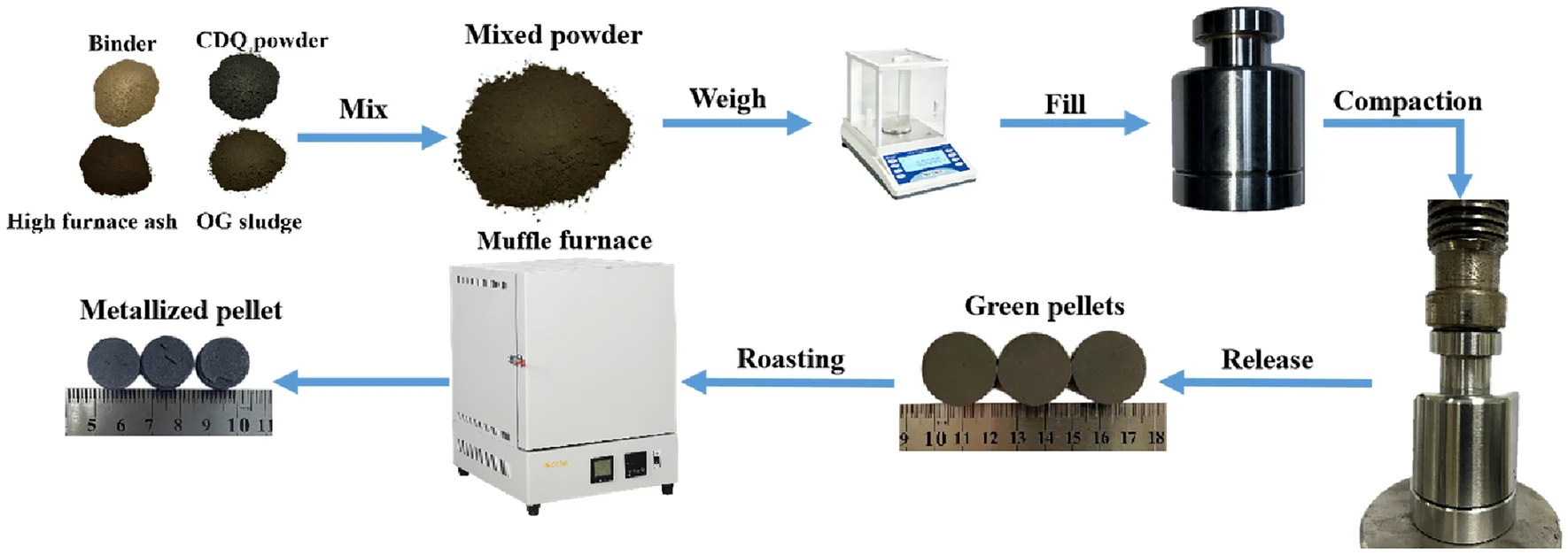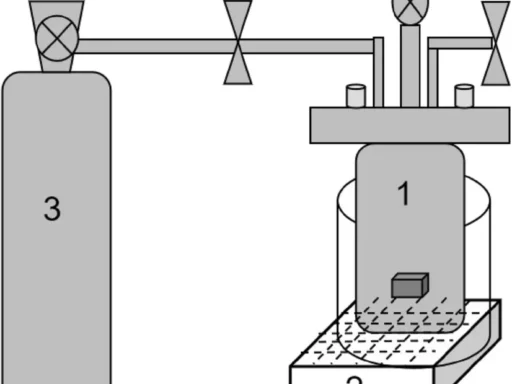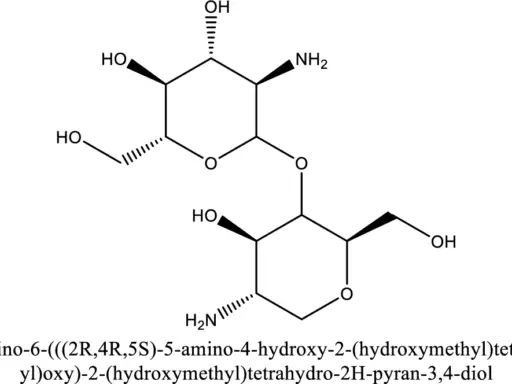Table of Contents
Metallurgical dust and sludge are unavoidable secondary materials that result from the process of refining and treating metals in industrial environments. Metallization, a process, can transform these materials into valuable resources instead of discarding them as garbage. As a result, the metallized blast furnace load significantly contributes to improving the efficiency and sustainability of blast furnace operations in the steelmaking industry.
An overview of metallurgical dust and sludge:
Several phases of metal manufacturing, such as ironmaking and steel refining, produce small particles and wastes known as metallurgical dust and sludge. The byproducts generally consist of iron oxides, carbon, and various metallic compounds, as well as impurities such as zinc, lead, and silica. Efficiently managing and utilising metallurgical dust and sludge is crucial for reducing environmental harm and maximising resource efficiency. Preparation process of metallized pellets.
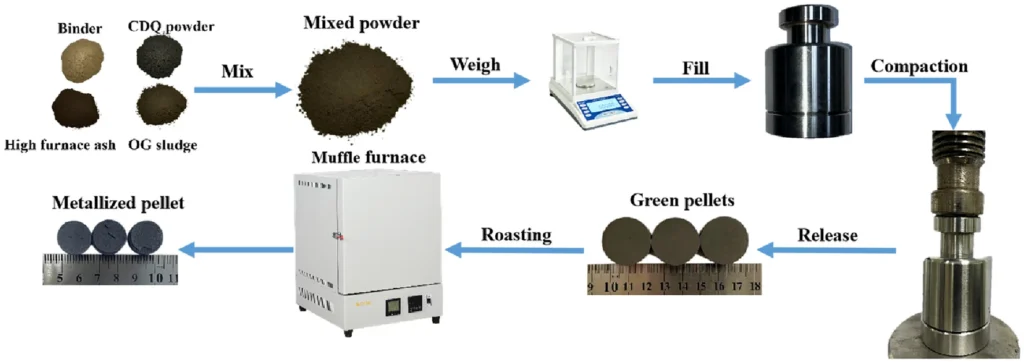
Two kinds of metallurgical dust phase diagram: (a) converter sludge; (b) Blast furnace ash;
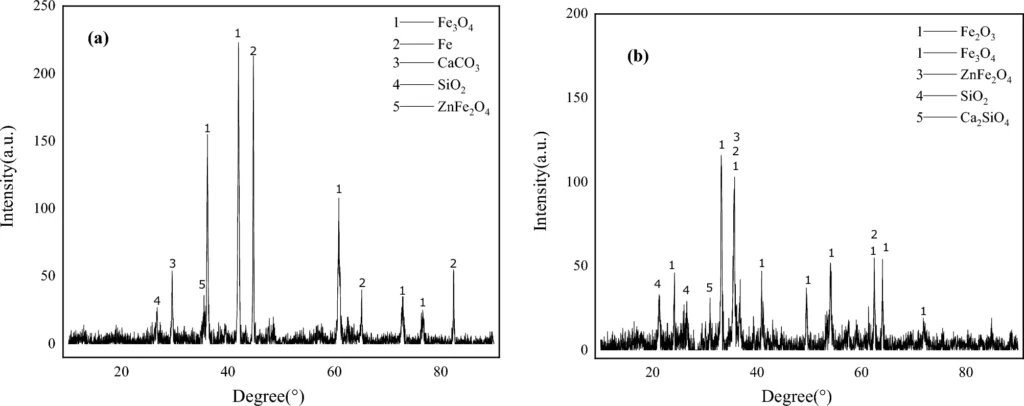
An overview of the metallized blast furnace burden:
Metallized blast furnace burden is the refined combination of metallurgical dust and sludge that is utilised as a primary substance in blast furnaces. This alternative feedstock provides numerous benefits compared to conventional raw materials, such as cost efficiency and a diminished environmental footprint.
Metallurgical dust and sludge: Collection and Sources
Metallurgical plants collect metallurgical dust and sludge from various sources, including dust collection systems, off-gas cleaning devices, and wastewater treatment facilities. The composition and quality of these byproducts differ depending on the metallurgical methods used.
The metallurgical dust and sludge possess both chemical and physical properties:
The chemical composition and physical qualities of metallurgical dust and sludge influence their suitability for processing and utilisation. Understanding these attributes is critical when selecting suitable methods for creating a metallized blast furnace load. Evolution mechanism of pellet strength and dezincification mechanism.
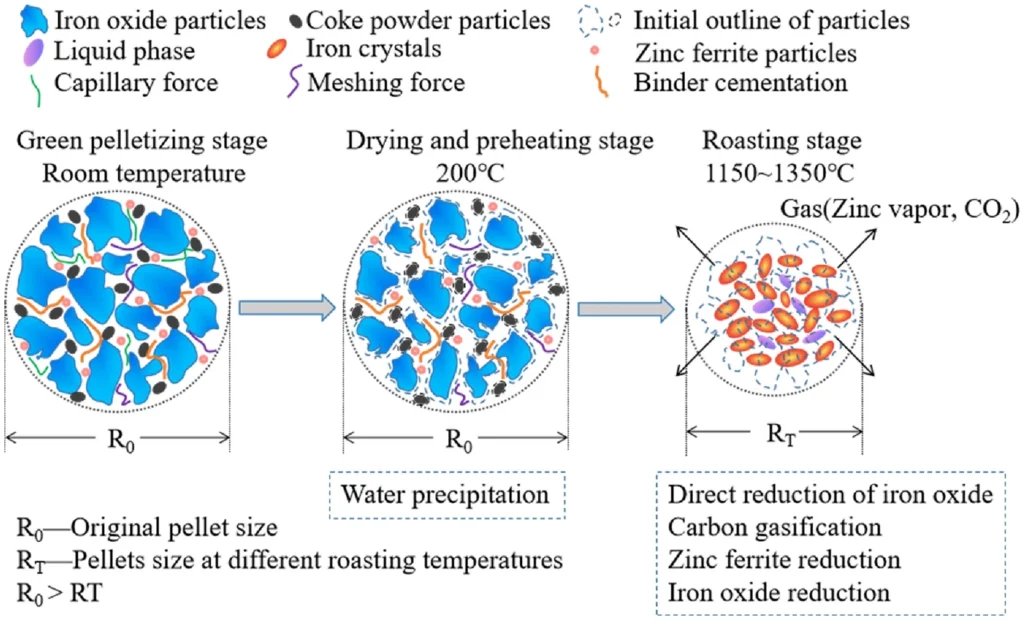
Preparation Techniques for Metallized Blast Furnace Burden:
The methods for preparing a metallized blast furnace burden are described below.
The process of metallized blast furnace burden preparation employs many processes to convert metallurgical dust and sludge into an acceptable material for use as feedstock in blast furnaces. Pelletization and briquetting are common agglomeration techniques used to improve the manageability and reducibility of these substances.
Methods of Agglomeration:
Pelletization is the process of forming small metal particles into round pellets using binders and additives. This procedure improves the durability and consistency of the metallized load, making it easier to incorporate into blast furnace operations. In contrast, briquette involves the compression of metallurgical dust and sludge into compact blocks, providing comparable advantages in terms of ease of handling and reactivity.
Techniques for reducing or minimizing something:
Metallurgical dust and sludge undergo reduction techniques to enhance their metal content. These approaches entail exposing the materials to elevated temperatures in atmospheres with reduced oxygen levels to transform iron oxides into metallic iron, thereby enhancing the quality of the metallized load.
Utilizing Metallized Burden in Blast Furnaces:
In blast furnaces, metallized blast furnace burden replaces conventional raw materials like iron ore and coke. The incorporation of this element results in enhanced furnace efficiency, diminished greenhouse gas emissions, and reduced dependence on primary resources.
Quality assurance and testing:
Optimising blast furnace performance and ensuring product consistency depends on the critical task of maintaining the quality of the metallized burden. Quality control measures, such as chemical analysis, moisture content measurement, and strength testing, meet stringent industry standards.
An analysis of specific instances and practical implementations in various sectors:
Several steelmaking plants have effectively incorporated metallized burden into their blast furnace processes, leading to financial savings and positive environmental outcomes. These case studies demonstrate the practicality and benefits of using metallurgical byproducts in the steel manufacturing process.
Obstacles and Constraints:
Although there are potential advantages, the process of creating a metallized blast furnace burdened with metallurgical dust and sludge presents technological difficulties. We can achieve consistency in outputs by considering factors like raw material composition variability, process complexity, and quality assurance requirements.
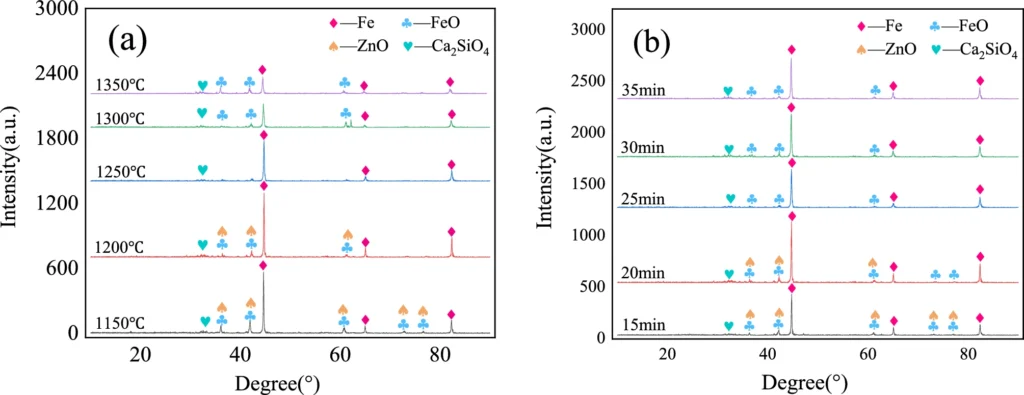
Dezincification and metallization rates of metallized pellets with different roasting conditions: (a) different roasting time; (b) different roasting temperatures.
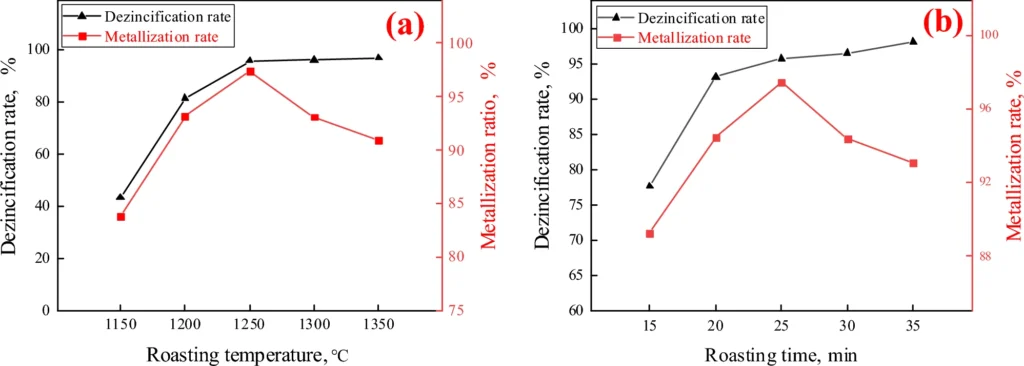
Technological progress and novel developments:
The focus of current research and development endeavours is on enhancing technologies for managing metallurgical waste. Innovations in process optimization, waste valuation, and energy efficiency aim to improve the sustainability of metallized burden manufacturing.
The impacts on the environment and long-term sustainability are significant:
The use of metallized steel enhances the sustainability of steel manufacturing by minimising waste output and preserving natural resources. The steel industry can effectively reduce its impact on the environment and actively support the ideas of a circular economy by recycling metallurgical waste.
In conclusion:
To summarize, the procedure and system for creating a metallized blast furnace burden from metallurgical dust and sludge represent significant progress in sustainable steel production methods. By efficiently utilizing metallurgical byproducts, the industry can gain economic advantages and reduce environmental consequences associated with conventional raw material acquisition.
Frequently Asked Questions:
1). What is metallized blast furnace burden? Metallized blast furnace burden refers to the process of converting iron ore into metallic iron in a blast furnace. A reducing agent, such as carbon, reduces iron ore to produce a metallized product that can serve as a feedstock in the blast furnace.
2). How is metallized burden prepared from metallurgical dust and sludge? A refined mixture of metallurgical dust and sludge known as “metallized blast furnace burden” serves as the main ingredient in blast furnaces used to produce steel.
3). What is the process for preparing a metallized burden using metallurgical dust and sludge?
Agglomeration and reduction techniques improve the acceptability of metallurgical dust and sludge for blast furnace operations.
4). What are the advantages of using metallised burden in blast furnaces?
Utilising metallized burden diminishes the dependence on primary resources, decreases manufacturing expenses, and mitigates carbon emissions in the steel production process.
5). What challenges are associated with the metallized burden preparation process?
The challenges encompass material unpredictability, stringent quality control requirements, and the intricate technical complexity involved in treating metallurgical wastes.
6). What is the metallized burden’s role in achieving sustainable steel production?
Utilizing metallized loads improves resource efficiency, reduces waste, and promotes environmental sustainability in the steel sector.
For more chemistry blogs, visit chemistry Master.


